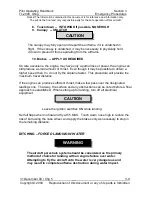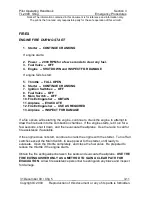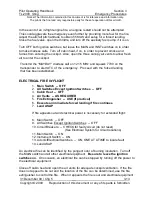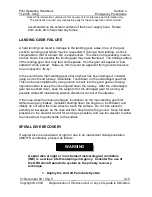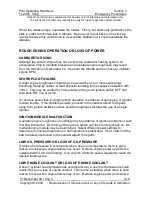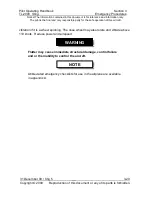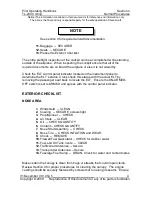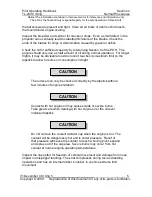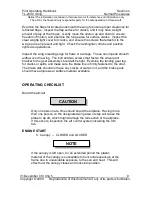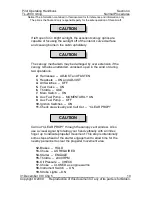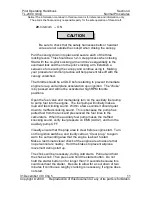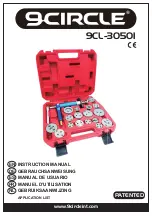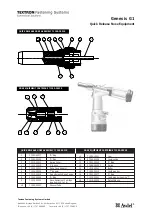
Pilot Operating Handbook
Section 3
TL-2000
Sting
Emergency Procedures
Notice! The information contained in this document is for reference and information only.
The pilot is the final and only responsible party for the safe operation of this aircraft.
31 December 09 / Chg 5
__
3-17
Copyright © 2009 Reproduction of this document or any of its parts is forbidden.
Controlled flight into terrain (CFIT) is a common occurrence
following inadvertent IMC conditions. Cross reference the descent
rate of the VSI with the altimeter to ensure that the airplane is not
too low above AGL before reaching an altitude in which positive,
visual outside references can be maintained.
SPIN RECOVERY
Intentional spins in this airplane are prohibited.
Should an inadvertent spin occur in this airplane, the following recovery procedure
should be used:
1. Throttle -- IDLE
2. Ailerons -- NEUTRALIZE
3. Rudder -- APPLY FULL (in opposite direction of rotation)
4. Elevator -- FORWARD (to break stall)
When rotation stops:
5. Rudder -- NEUTRALIZE
6. Elevator -- RECOVER SMOOTHLY FROM NOSE-LOW ATTITUDE
When recovering from a nose-low attitude, do not over-stress the
airframe by pulling back too abruptly on the flight stick.
7. If the aircraft does not recover, Deploy the Parachute.
Close the throttle to prevent an unnecessary increase in rotation.
During a spin, one wing is in a stalled condition resulting in ineffective
aileron inputs to control the rotation. Neutralize the ailerons, and apply
full rudder in the opposite direction of rotation. Because an airfoil can
stall at any airspeed and in any relation to the horizon, push forward on
the stick to break the stall.
WARNING
WARNING
WARNING
CAUTION
CAUTION







